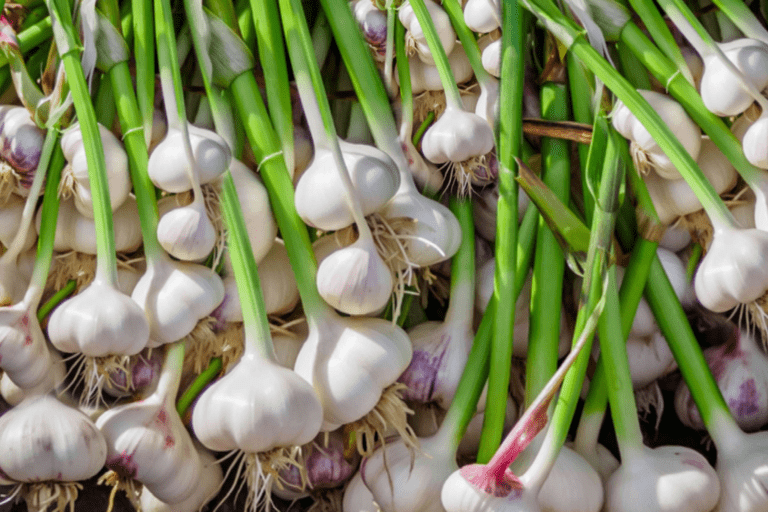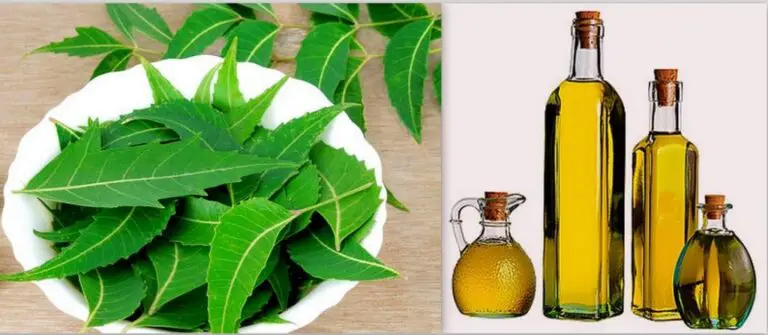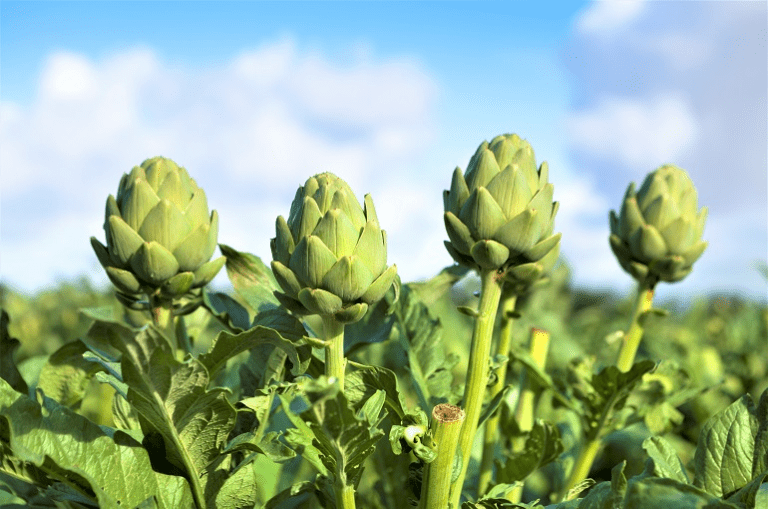How to Eliminate Caterpillars: 5 Effective Ways to Manage and Stop These Pests from Your Plants
Table of Contents
Understanding the Caterpillar Menace: A Comprehensive Guide for Gardeners
Caterpillars, those voracious larvae of butterflies and moths, can be a formidable menace to gardeners. These tiny creatures have a remarkable ability to devour leaves, flowers, and even stems, causing significant damage to plants. As gardeners, it is essential for us to understand the caterpillar menace and develop effective strategies to control their population.
One crucial aspect of dealing with caterpillars is identifying the common species that pose a threat to our gardens. Some notorious culprits include the cabbage worm, tomato hornworm, and gypsy moth caterpillar. Each species has its own distinguishing features, behavior patterns, and preferred host plants. By recognizing these pests, we can implement targeted control measures to mitigate their impact and protect our beloved plants from harm.

Identifying Common Caterpillar Species: Recognizing the Culprits
Caterpillars are a common nuisance in gardens, often causing extensive damage to plants. To effectively combat these garden pests, it is crucial to be able to identify the different species of caterpillars that may be wreaking havoc on your plants. This knowledge will not only help you understand their behaviors and habits but also aid in implementing appropriate control measures.
One commonly encountered caterpillar species is the Tomato Hornworm (Manduca quinquemaculata). These caterpillars have a striking appearance, featuring large bodies with bright green coloration and distinctive diagonal white stripes along their sides. Despite their eye-catching appearance, Tomato Hornworms can cause significant damage to tomato plants and other related crops. Another frequently sighted culprit is the Cabbage White Butterfly Caterpillar (Pieris rapae). These caterpillars have a velvety green body with a series of yellow stripes and black spots. They are notorious for devouring cabbage family plants, such as broccoli, kale, and cauliflower.
The Lifecycle of Caterpillars: Key Stages and Behaviors
Caterpillars undergo a fascinating and intricate lifecycle consisting of key stages and distinct behaviors. Understanding these stages can help gardeners effectively manage caterpillar populations and minimize damage to their plants.
The initial stage of a caterpillar’s lifecycle is the egg. Female butterflies or moths carefully select suitable plants upon which to lay their eggs. These eggs are typically small and often camouflaged, making them difficult to detect. The length of the egg stage varies depending on the species and environmental conditions. Once the eggs hatch, the caterpillars emerge and begin their feeding frenzy. Caterpillars are voracious eaters, consuming large quantities of vegetation to fuel their rapid growth. They possess strong jaws that enable them to chew through leaves with ease. As they grow, caterpillars molt several times, shedding their outer skin to accommodate their increasing body size. This process of shedding is known as molting, and each molt represents a new instar, or developmental stage. Caterpillars continue this molting process until they reach their final instar and are ready to enter the next phase of their lifecycle.

Harmful Effects of Caterpillars on Plants: Recognizing the Damage
Caterpillars may seem harmless with their small size and innocuous appearance, but they can wreak havoc on your garden plants. These voracious eaters can cause extensive damage to foliage, flowers, and even fruits, impacting the overall health and productivity of your cherished plants.
One of the most noticeable effects of caterpillar infestation is the presence of ragged, chewed leaves. These pests have a hearty appetite and can quickly strip plants of their foliage, leaving behind unsightly bare stems. Furthermore, caterpillars are not picky eaters and can attack a wide variety of plants, from vegetables to ornamentals, causing widespread damage across your garden. This can not only compromise the aesthetic appeal of your outdoor oasis, but also disrupt the plant’s ability to carry out vital photosynthesis, ultimately leading to stunted growth and reduced plant vigor.
In addition to defoliation, caterpillars can also cause other harmful effects on your plants. Some species, like the tomato hornworm, can burrow into fruits, rendering them unmarketable or inedible. Others, such as the gypsy moth caterpillar, produce copious amounts of silk webbing that can enshroud entire branches, impeding the movement of air and sunlight, and creating a conducive environment for secondary fungal infections. These detrimental effects can significantly impact crop yield, diminish the quality of your harvest, and create additional pest management challenges.
As gardeners, it is crucial to recognize the damage caused by caterpillars in order to develop effective strategies for their control. By staying informed about the harmful effects caterpillars can have on your plants, you can take proactive measures to protect your garden and mitigate their impact.
| Effects of Caterpillar Infestation on Plants | Description |
|---|---|
| Foliage Stripping | Caterpillars can strip plants of their foliage, leaving bare stems and compromising the garden’s aesthetic appeal. |
| Wide Range of Host Plants | Caterpillars are not picky eaters and can attack various plants, causing widespread damage across the entire garden. |
| Disruption of Photosynthesis | Caterpillar-induced defoliation disrupts photosynthesis, leading to stunted growth and reduced vigor in affected plants. |
| Damage to Fruits | Certain caterpillar species can burrow into fruits, making them unmarketable or inedible and impacting overall harvest quality. |
| Silk Webbing Production | Some caterpillars produce silk webbing that enshrouds branches, hindering air and sunlight movement and promoting fungal infections. |
| Impact on Crop Yield | The harmful effects of caterpillar infestation can significantly impact crop yield, diminishing harvest quality, and posing additional pest management challenges. |

Natural Predators: Harnessing Nature’s Help in Caterpillar Control
Natural predators play a crucial role in controlling caterpillar infestations in gardens. These predatory species have evolved to feed on caterpillars, helping to regulate their population and prevent excessive damage to plants. By harnessing nature’s own mechanisms, gardeners can effectively reduce the number of caterpillars and minimize the associated harm.
One of the most well-known natural predators of caterpillars is the praying mantis. These remarkable insects are equipped with sharp forelegs that allow them to capture and consume their prey, including caterpillars. Praying mantises are active hunters, patiently stalking their victims before launching a lightning-fast strike. Their presence alone can act as a deterrent for caterpillars, as they will avoid areas where mantises are present. Additionally, the praying mantis population can be enhanced by releasing mantis egg cases, known as ootheca, in infested areas. As the eggs hatch, the young mantises will help to keep caterpillar populations in check.

Manual Removal Techniques: Effective Hands-On Approaches
One of the most effective ways to control caterpillar infestation in your garden is through manual removal techniques. By physically removing caterpillars from your plants, you can prevent further damage and preserve the health of your garden. There are several hands-on approaches that can be employed to tackle these garden pests.
Firstly, a simple and straightforward method is to inspect your plants regularly and carefully. Look for signs of caterpillar presence such as chewed leaves, frass (droppings), or eggs. Once you spot any caterpillars, carefully pick them off the plants and drop them into a bucket of soapy water. This method is particularly useful for smaller gardens or for plants that are easily accessible. Remember to remove any caterpillars you find, as they can quickly multiply and cause extensive damage if left unchecked. Additionally, practicing good sanitation by removing fallen leaves and debris can help prevent the caterpillars from finding hiding places and breeding grounds.
Introducing Beneficial Insects: Using Biological Control Methods
Beneficial insects can be an invaluable tool in the biological control of caterpillars in your garden. These natural predators can help keep caterpillar populations in check, reducing the need for chemical pesticides. One such beneficial insect is the parasitic wasp. These tiny wasps lay their eggs inside caterpillars, where the wasp larvae feed on the caterpillar, eventually killing it. By releasing parasitic wasps into your garden, you can help control caterpillar populations without harming your plants.
| Beneficial Insects in Biological Pest Control | Description |
|---|---|
| Ladybugs (Lady Beetles) | Feed on aphids, mites, and other soft-bodied pests. Provide effective control in gardens and greenhouses. |
| Parasitoid Wasps | Lay eggs on or inside pests, such as caterpillars or aphids. Larvae develop inside the pest, ultimately killing it. Effective against a variety of pests. |
| Predatory Mites | Prey on spider mites, thrips, and other small pests. Useful in controlling pest populations in greenhouse and outdoor settings. |
| Hoverflies (Syrphid Flies) | Larvae feed on aphids, thrips, and other soft-bodied pests. Adult hoverflies are pollinators. Provide dual benefits in pest control and pollination. |
| Predatory Beetles (Ground Beetles) | Feed on various soil-dwelling pests, including caterpillar larvae and beetle grubs. Active in reducing pest populations in the soil. |
| Praying Mantises | Generalist predators that consume a variety of insects. Effective in controlling a broad range of pests in gardens and landscapes. |
| Nematodes (Parasitic) | Microscopic worms that parasitize and kill soil-dwelling pests, such as larvae of beetles and flies. Effective in controlling pests in the soil. |
| Assassin Bugs | Piercing-sucking insects that prey on a wide range of pests, including caterpillars, aphids, and beetles. Provide effective control in various ecosystems. |
| Green Lacewings | Larvae are voracious predators of aphids, caterpillars, and other small insects. Adults are also beneficial pollinators. Suitable for greenhouse pest control. |
| Beneficial Nematodes | Target soil-dwelling pests, particularly larvae of insects like fleas, weevils, and grubs. Provide effective control in lawns, gardens, and agricultural settings. |
Homemade Caterpillar Repellents: Safe and Effective DIY Solutions
Caterpillars can be a frustrating nuisance in any garden, wreaking havoc on plants and decimating foliage. While chemical pesticides may seem like an immediate solution, many gardeners prefer to find safe and effective alternatives. Homemade caterpillar repellents offer a natural and eco-friendly approach to controlling these pests, allowing gardeners to protect their plants without harming beneficial insects or impacting the environment.
One simple yet effective DIY solution is a garlic spray. Garlic contains natural compounds that repel caterpillars and other garden pests. To make your own garlic spray, finely chop several garlic cloves and steep them in water overnight. Strain the mixture and pour it into a spray bottle. Spritz the foliage of affected plants, paying particular attention to the undersides of leaves. Reapply the solution every few days or after rainfall for continued protection. Not only will this homemade repellent help deter caterpillars, but it may also ward off other unwanted intruders in your garden.
Natural Plant Barriers: Creating Physical Obstacles to Caterpillar Infestation
Creating natural plant barriers is an effective method for preventing caterpillar infestation in your garden. By strategically placing certain plants around your vulnerable plants, you can create physical obstacles that deter caterpillars from reaching their favorite foliage.
One popular natural plant barrier is the use of strong-smelling herbs and flowers. Mint, lavender, and marigold are known for their pungent scents, which repel many types of insects, including caterpillars. Incorporating these plants into your garden not only adds beauty and fragrance but also acts as a natural deterrent to unwanted caterpillar visitors.
Another plant barrier option is to grow plants with prickly or rough textures. Caterpillars often prefer smooth leaves for feeding, so planting varieties with thorns, spines, or hairy foliage can make them think twice before munching on your plants. Roses, nettles, and certain ferns are excellent choices for creating physical barriers that caterpillars find difficult to navigate.
Remember, creating a diverse plant community in your garden can also help attract natural predators of caterpillars, such as birds and beneficial insects. By incorporating a variety of plant barriers and attracting these natural enemies, you can create a well-balanced ecosystem that works to naturally control caterpillar populations.
Organic Pesticides: An Eco-Friendly Approach to Caterpillar Management
Organic pesticides offer a safe and eco-friendly solution for managing caterpillar populations in your garden. Unlike conventional chemical pesticides, these organic alternatives are derived from natural sources and designed to specifically target caterpillars while minimizing harm to beneficial insects and the environment.
One popular organic pesticide option is Bacillus thuringiensis (Bt), a naturally occurring bacterium that produces a protein toxic to caterpillars. When sprayed onto plants, Bt is ingested by the caterpillars, causing them to stop feeding and eventually die. This targeted approach ensures that non-target organisms, such as birds, bees, and other insects, remain unharmed.
Another organic pesticide, spinosad, is derived from a soil bacterium known as Saccharopolyspora spinosa. It works by targeting the nervous system of caterpillars, leading to paralysis and death. Research has shown that spinosad is highly effective against a wide range of caterpillar species while posing minimal risk to beneficial insects and the environment.
Companion Planting: Utilizing Plant Allies to Deter Caterpillars
Companion planting is an effective strategy for deterring caterpillars from wreaking havoc in your garden. By strategically selecting plants that have natural properties to repel or confuse caterpillars, you can create a barrier that protects your prized plants.
One popular example of companion planting to deter caterpillars is the use of strong-scented herbs like rosemary, sage, and lavender. These aromatic plants emit powerful odors that camouflage the scent of your vulnerable plants, making it difficult for caterpillars to locate them. Additionally, the pungent aromas can confuse and repel caterpillars, keeping them at bay.
Cultural Practices: Preventing Caterpillar Infestation through Proper Plant Care
Proper plant care is essential in preventing caterpillar infestation and maintaining a healthy garden. By implementing effective cultural practices, gardeners can create an environment that is less attractive to these pests, reducing their presence and minimizing potential damage.
One important cultural practice is to regularly inspect your plants for any signs of caterpillars or their eggs. By being vigilant, you can catch any infestations early and take appropriate action. Additionally, removing any fallen leaves, debris, or weeds around your plants can help eliminate potential hiding or breeding spots for caterpillars.
Proper watering practices are also crucial in preventing caterpillar infestation. Over-watering can create favorable conditions for these pests by promoting the growth of lush foliage, which attracts caterpillars. To avoid excess moisture, it is advisable to water plants at their base instead of overhead, allowing the leaves to remain dry. This not only discourages caterpillars but also helps prevent the spread of fungal diseases.
By following these cultural practices, gardeners can significantly reduce the risk of caterpillar infestation and promote healthier, more resilient plants. However, it is important to remember that no method is foolproof, and in some cases, additional pest control measures may be necessary.
Monitoring and Early Detection: Strategies for Prompt Caterpillar Control
Monitoring and early detection are crucial strategies for effective caterpillar control in gardens. By regularly inspecting plants for signs of infestation, gardeners can promptly identify and address caterpillar problems before they escalate. Visual inspection is a simple yet effective method of detection, where gardeners should closely examine leaves, stems, and fruits for any visible caterpillars or their feeding damage. Additionally, it is beneficial to pay attention to the presence of frass (caterpillar droppings) or silk webbing, as they can indicate caterpillar activity in the garden.
Another valuable technique for monitoring and early detection is the use of pheromone traps. These traps emit chemical attractants that lure male moths, helping to determine the presence and population of specific caterpillar species in the vicinity. By regularly checking these traps, gardeners can gain insights into potential caterpillar infestations and take necessary preventive or control measures. Monitoring weather conditions is also crucial, as certain caterpillar species are more active during specific temperature and humidity ranges. Being aware of weather trends can assist gardeners in predicting and addressing caterpillar outbreaks proactively.
Effective monitoring and early detection not only enable gardeners to intervene in caterpillar infestations promptly but also contribute to the overall success of caterpillar control programs. By adopting these strategies, gardeners can minimize damage to plants and effectively manage caterpillar populations in their gardens.
How often should I monitor my plants for caterpillar infestation?
It is recommended to monitor your plants for caterpillar infestation on a regular basis, ideally at least once a week during the growing season.
What are some signs that indicate my plants are being attacked by caterpillars?
Common signs of caterpillar damage include chewed leaves, holes in foliage, skeletonized leaves, and droppings (frass) near the affected plants.
How can I identify the presence of beneficial insects that can help control caterpillars?
Look for signs of beneficial insects such as ladybugs, lacewings, or parasitic wasps near your plants. These insects can often be identified by their unique shapes, colors, or feeding behaviors.
Are there any natural plant barriers that can prevent caterpillar infestation?
Yes, certain plants can act as barriers to deter caterpillars. For example, planting marigolds, garlic, or onions around your susceptible plants can help repel caterpillars.
Can I use organic pesticides for caterpillar control?
Yes, organic pesticides made from natural substances like neem oil or Bacillus thuringiensis (Bt) can be effective in controlling caterpillars while minimizing harm to the environment.
How can companion planting help deter caterpillars?
Companion planting involves growing specific plants near each other to create a mutually beneficial environment. Certain plants, like dill, cilantro, or nasturtiums, can repel caterpillars when planted alongside susceptible plants.
What are some cultural practices I can implement to prevent caterpillar infestation?
Proper plant care practices, such as regularly removing weeds, maintaining healthy soil, and providing adequate watering and fertilization, can help prevent caterpillar infestation.
Can monitoring and early detection really help control caterpillars?
Yes, monitoring your plants for signs of caterpillar infestation and detecting them early can significantly improve control measures. It allows for prompt intervention and reduces the chances of severe damage to your plants.
How do I manually remove caterpillars from my plants?
To manually remove caterpillars, wear gloves and carefully pick them off the plants by hand. You can either drop them into a bucket of soapy water or remove them to a distant location away from your garden.
Are homemade caterpillar repellents safe for plants and the environment?
Yes, homemade caterpillar repellents made from natural ingredients like garlic, chili pepper, or soapy water are generally safe for plants and the environment when used as directed.

Beck Wakeford is a dedicated writer at SouthElMonteHydroponics, with a fervent enthusiasm for agriculture and technological innovation. Armed with a degree in Agricultural Engineering from a leading university, Beck specializes in hydroponic systems design, automation, and optimization. Their passion for merging traditional farming with cutting-edge technology drives them to explore novel solutions for sustainable food production. Beck’s expertise and keen interest in the intersection of engineering and agriculture make them a valuable asset in the quest for efficient and eco-friendly farming practices. Through their writing, Beck aims to inspire others to embrace the potential of hydroponics in shaping a more sustainable future.





